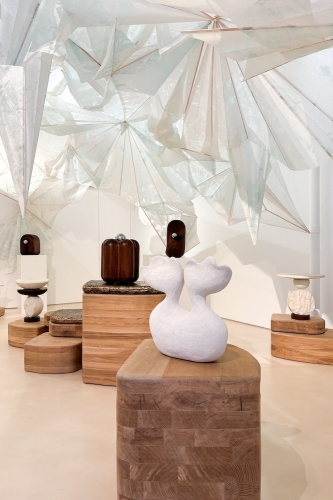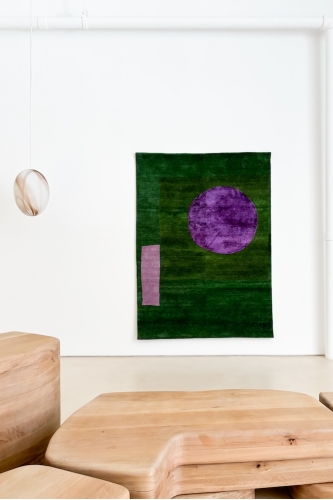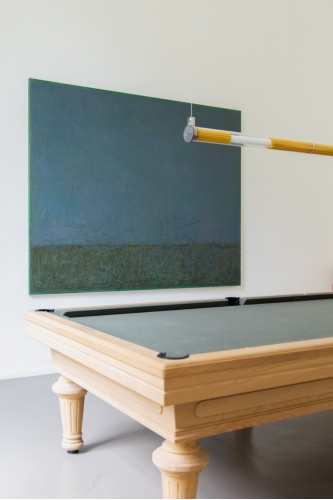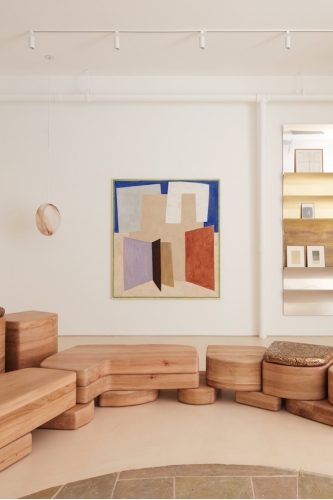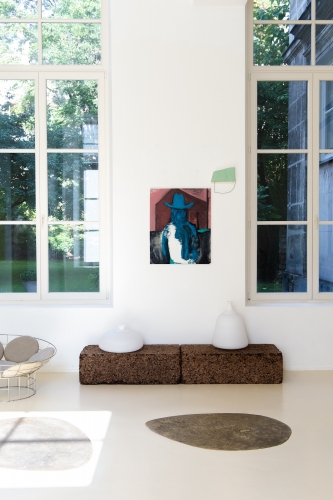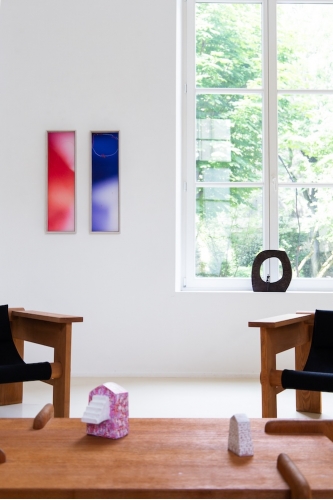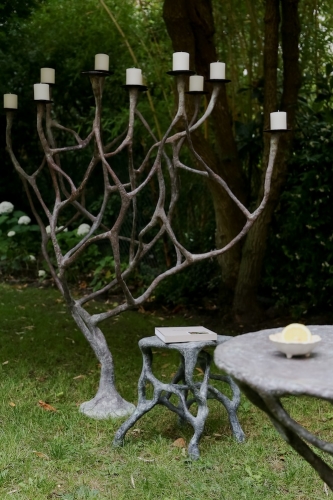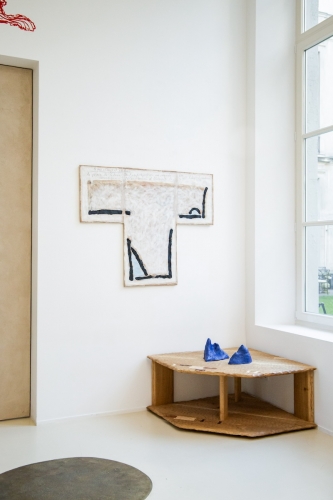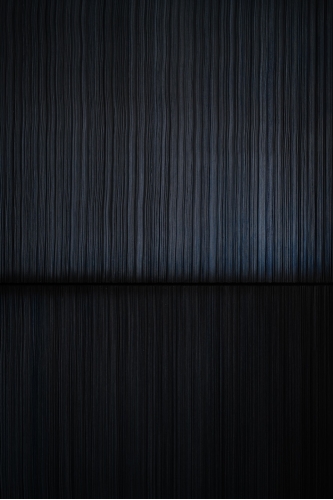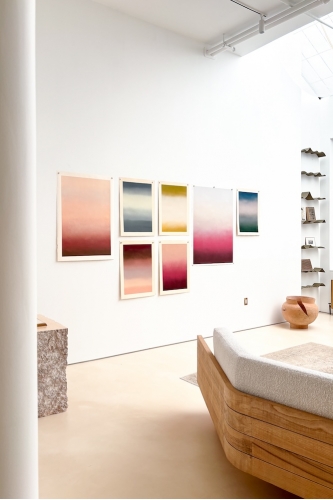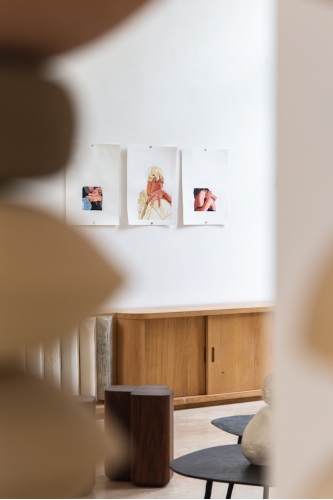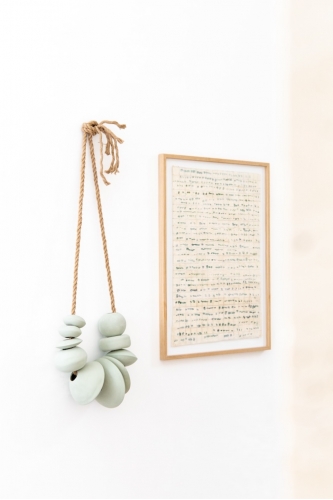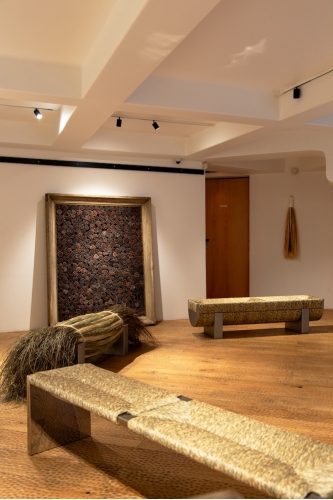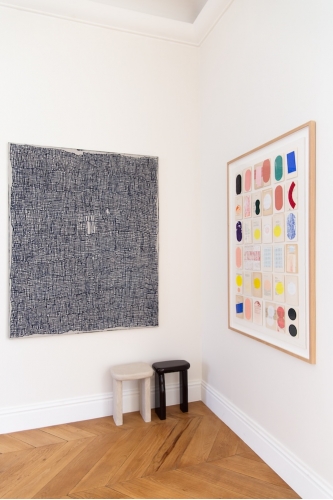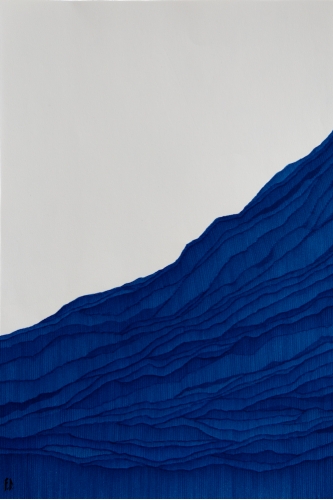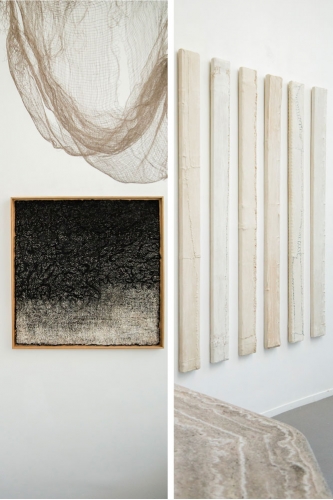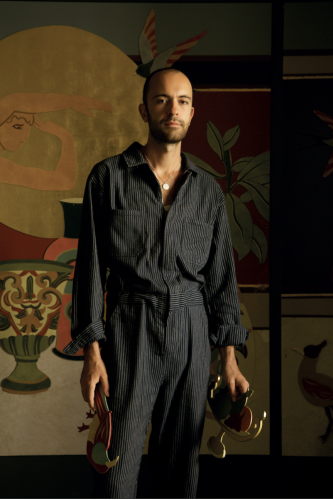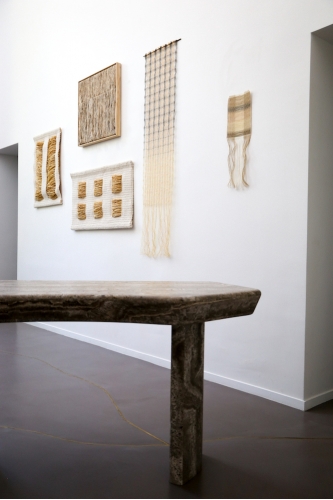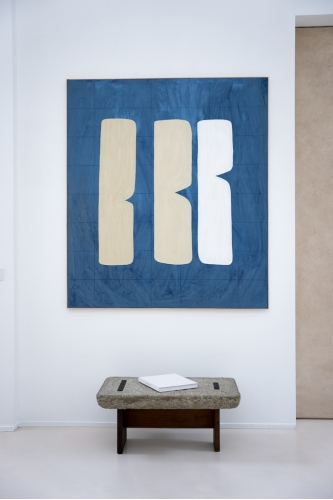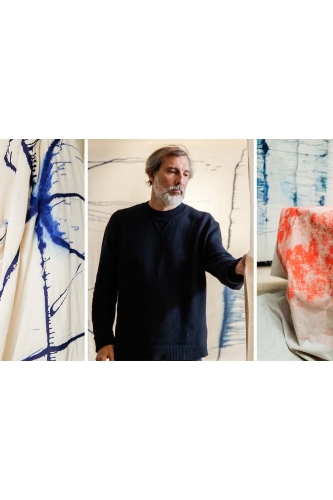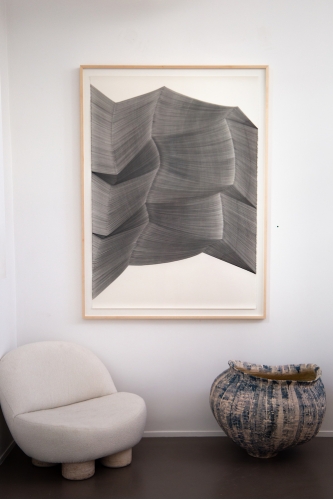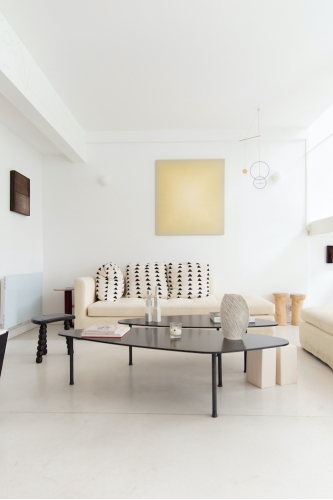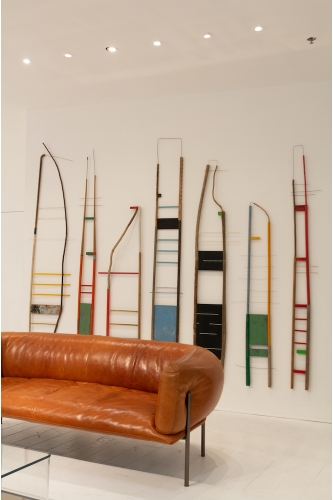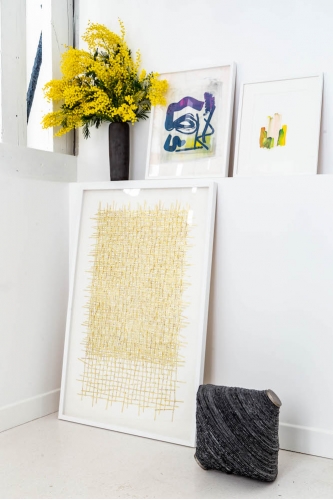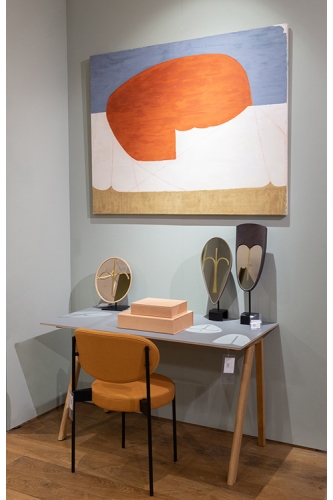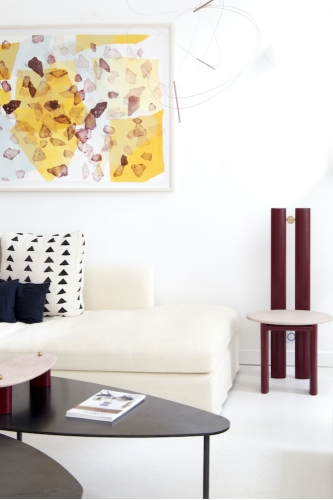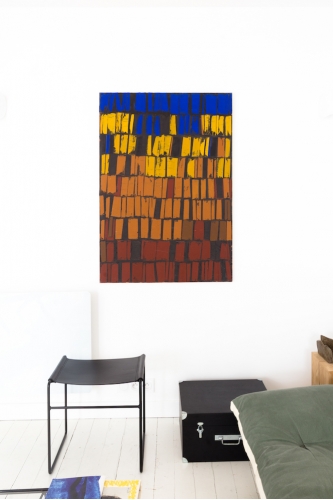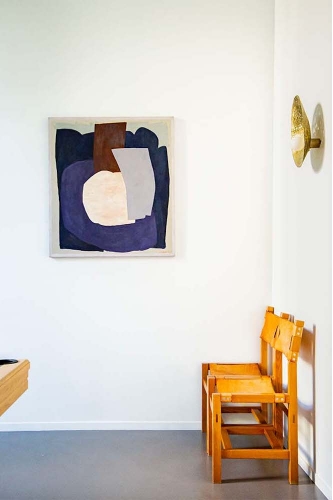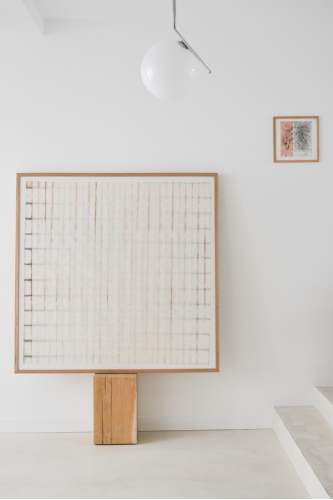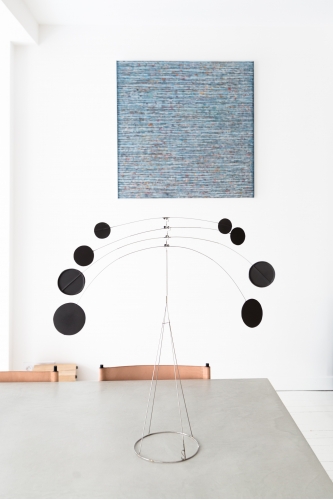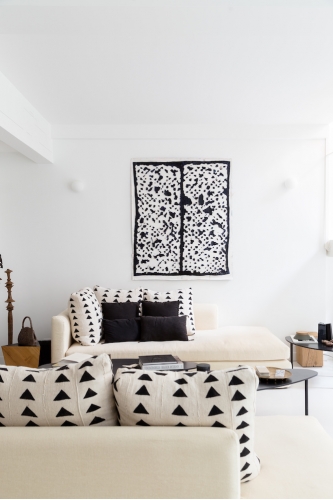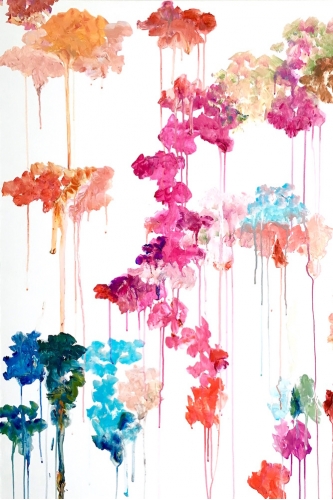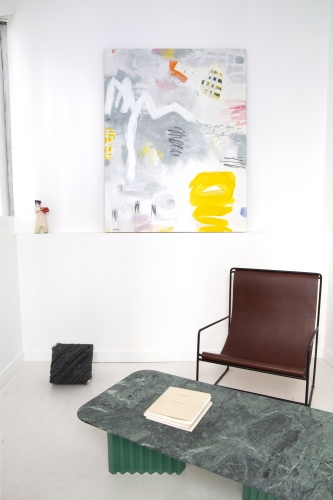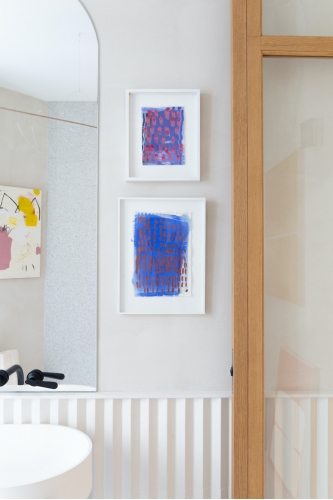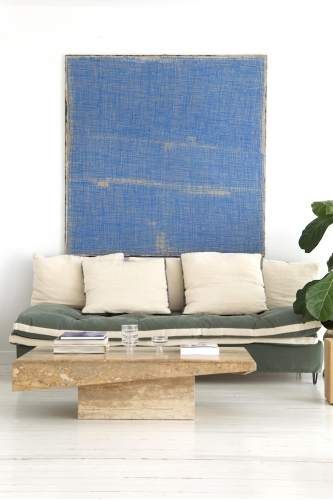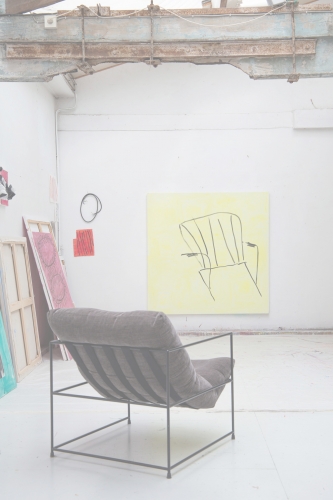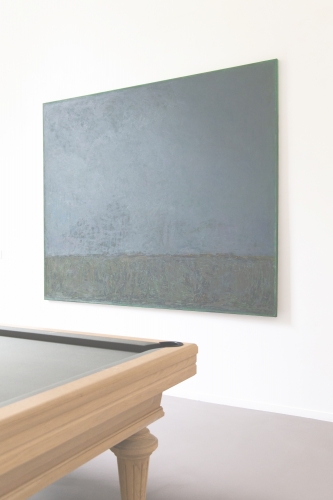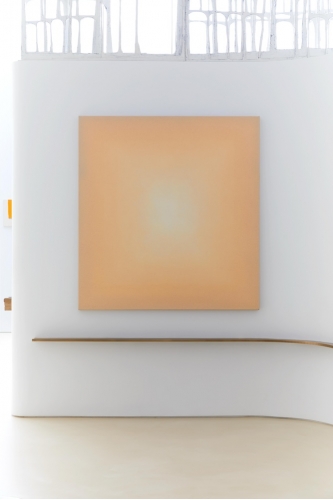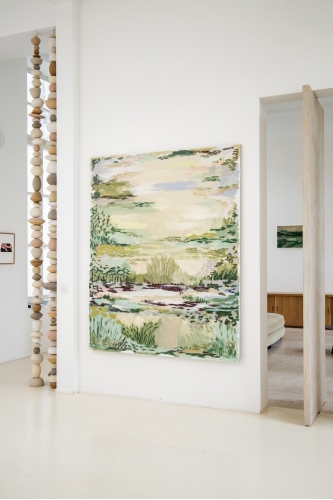exhibitions
see more
PAST EXHIBITIONS
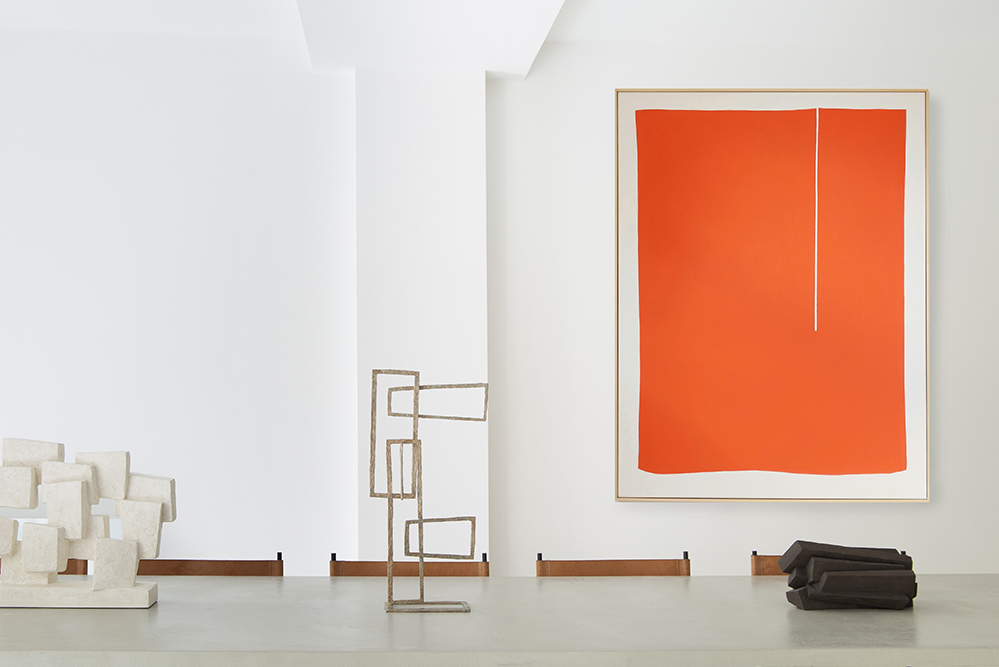
En perspective
Ludovic Philippon and Delphine Brabant
November 2019
Ludovic Philippon
The Breach and the Form
Form: a set of characteristic traits that allow a concrete or abstract reality to be recognized, say the dictionaries. Recognized, in other words, distinguished from other forms and from the background upon which it appears, separated by a boundary painters call the contour. Ludovic Philippon is a painter. His art does not follow definitions—it subverts them. By choice, because the freedom to paint lies precisely in the ability to elude the recognizable, making the canvas a site of fertile disorientation. Standing before a painting by Ludovic Philippon means accepting the renunciation of the illusion—initially felt—that what is present can be named, identified, or recognized. What I thought was a floral motif—is it anything more than an expanding white space against an orange background? But, really, what is the background here, the orange or the white? Orange Sweetness, says the title. We are far from dictionaries and their cold definitions. We are at the heart of painting: what it reveals when it transcends the boundaries that fix the visible. Both pleasure and necessity drive the artist—who was an architect for many years—to use painting as a means to invent a different kind of space. A space that is open, that does not conform to dictionary definitions or the stifling rules of construction. No form exists in his work without its counter-form, with which it interacts impurely, not separating but hybridizing. This is openness: this constant reinvention of seizing what might act as a contour and transforming it into a breach. The painting becomes an intrusion. Something happens. It’s called space, and this birth, which the painter allows us to experience, takes the form of a fault—and an alliance. In Orange Sweetness, it’s impossible to discern whether the orange or the white intrudes into or expands within the other’s space. But why decide when the painting invites us to dwell in the undecidable? Letting go of recognition expands perception. Once I stop seeking boundaries that separate, I see that here, everything that could mark a frontier is actually a passage. No line is perfectly straight, as it is drawn by a human hand—hesitant, living, driven by painting as a lived experience in the present (Hush II). No edge is truly an edge or boundary, as where one thing should end, something else emerges at its margin, like an underneath stirring the above (Great Dark Balance). Painting is a journey. Everything that happened during the time of this painting is still there—even what is no longer visible or barely discernible—still active, like a memory awakened by our gaze. “When I paint, I can’t stop adding things that aren’t there,” Philippon tells me. A beautiful phrase, enigmatic in its essence. Painting is adding the hidden.
The canvas is an active, expanding space, saturated with an invisibility that—like a force—undermines its constraints to reach the open.
—Pierre Wat
Delphine Brabant
Delphine Brabant composes her sculptures like an architect, assembling and interlocking a multitude of forms with simple lines. In her near-obsessive quest for harmonious compositions, Delphine nonetheless embraces the contradiction of forces. Her sculptures explore the interplay of fullness and emptiness, precarious stability, rigorous sensitivity, strength, and fragility. Delphine also confronts materials, juxtaposing those that are noble and enduring with those that are raw and repurposed. She works with bronze, steel, concrete, plaster, clay, as well as stone and wood. Whether appreciating the precision of direct carving, the surprises revealed by wood’s texture, the color of plaster, or the malleability of clay, Delphine’s love for material shines through as she constructs geometric and architectural forms. Inspired by her perspective on landscapes, Delphine’s recent works translate elements of lines or “furrows,” planes or “units,” as well as material imprints that reveal new “landscape-perspectives,” both linear and aerial.




